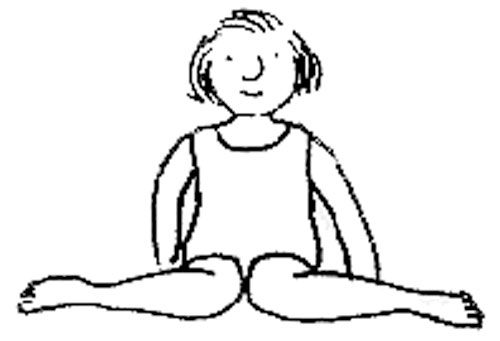.jpg)
As a physical therapist, I often come across people, whether they are parents, teachers, physicians, or therapists, talking about muscle tone. I am very often asked what that means. Muscle tone is the continuous, passive contraction and resistance to stretch of muscles at rest. Normally, even when relaxed, muscles have a very small amount of contraction that gives them a spring-like feel and provides some resistance to passive movement. Tone is not the same as muscle strength; they are independent characteristics of muscles. Strength, in contrast to tone, is the active force generated by a muscle contraction. It is not the state of the muscle at rest. Muscle tone is regulated by constant signals that travel from the brain via the nerves and tell the muscles to contract at rest (baseline.)
Hypotonia is a medical term used to describe decreased muscle tone. Hypotonia can happen from damage to the brain, spinal cord, nerves, or muscles. The damage can be the result of trauma, environmental factors, genetic conditions, or central nervous system disorders. Hypotonia is seen in lower motor neuron diseases. It can present as muscle flaccidity, where the limbs appear floppy, stretch reflex responses are decreased, and the limb’s resistance to passive movement is also decreased. Muscles with low tone are slow to initiate a muscle contraction, contract very slowly in response to a stimulus, and cannot maintain a contraction for a prolonged period of time. Because these low tone muscles do not fully contract, they remain loose and very stretchy.
Often, Hypotonia can be an isolated condition called benign congenital hypotonia where a child is born with low muscle tone and it is not associated with any other neurological condition. Mild or benign hypotonia is often diagnosed by physical and occupational therapists through a series of exercises designed to assess development. Some signs to look for are hyperextension of joints, especially of the elbows and knees, “W” sitting, poor posture, decreased endurance and fatigue.
If a child is developmentally delayed, it is important to consider abnormal muscle tone as an underlying cause. Children with normal muscle tone are expected to achieve certain physical abilities within an average timeframe after birth. Most low-tone infants have delayed developmental milestones since it takes a lot more energy to activate their muscles in order to move. Hypotonic infants are typically late in lifting their heads, rolling over, sitting up, crawling, and walking. Important fine motor skill development can be delayed when grasping a toy or finger, transferring a small object from hand to hand, pointing out objects, following movement with the eyes, and self-feeding are not achieved at age appropriate times. Speech can also be delayed as a result of hypotonia since the muscles in the face (mouth and jaw) are affected as well. Low-tone children can learn to speak later than their peers, even if they appear to understand and obey simple commands.
The most important intervention for treating hypotonia is by increasing muscle strength to compensate for the muscle’s low resting tone. By building up muscle strength, a child will be able to achieve age appropriate skills and have improved endurance.
Hypertonia, the opposite of hypotonia, is a term used to describe increased muscle tone. It is seen in upper motor neuron diseases like lesions in the brain. Hypertonia can present as either spasticity or rigidity. Spasticity is velocity-dependent resistance to passive stretch. If one quickly, passively stretches a muscle, it will elicit increased muscle tone, but passively moving the muscle slowly, may not elicit increased muscle tone. Spasticity can present as “clasp-knife,” in which there is increased resistance only at the beginning or at the end of movement. Rigidity is velocity-independent resistance to passive stretch so the increased tone is present whether there is a quick stretch to the muscle or not. Rigidity can present as “leadpipe,” where there is continuous resistance to passive movement, or it may be of “cogwheel” type, where the resistance to passive movement is in a jerky manner.
Hypertonia can be seen in many upper motor neuron diseases, most commonly cerebral palsy. Physical therapy has been shown to be effective in controlling hypertonia through the use of stretching aimed to reduce motor neuron excitability by inhibiting excessive tone as far as possible. In addition to conventional therapy, there are many pharmaceutical interventions used to decrease spasticity that can be used in conjunction with a rigorous stretching program.
Physical, occupational, and speech therapy play an integral role in the treatment of tonal disorders whether it is hypotonia or hypertonia. Early intervention is crucial to limiting delay and helping each child to function optimally in his/her environment.
by Elisheva Fuchs









